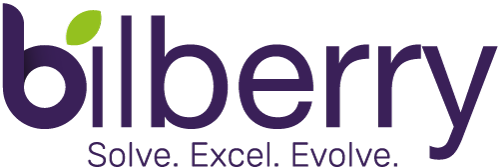FAQs
General Ask
What is AML software, and why is it important?
AML software, or Anti-Money Laundering software, is a specialized technology designed to detect and prevent money laundering and other financial crimes. It is crucial for financial institutions to comply with regulatory requirements and protect against illicit activities.
How does AML software work?
AML software works by employing advanced algorithms and data analytics to analyze financial transactions in real-time. It identifies patterns, anomalies, and suspicious activities that may indicate money laundering, helping financial institutions take prompt action.
What are the key features of AML software?
Key features of AML software include transaction monitoring, customer due diligence (CDD), watchlist screening, reporting and compliance tools, risk assessment capabilities, and integration with existing systems.
How does AML software assist in customer due diligence (CDD)?
AML software automates and streamlines the customer onboarding process by conducting due diligence checks. It verifies customer identities, assesses their risk level, and ensures compliance with regulatory requirements.
What is watchlist screening, and why is it important?
Watchlist screening is a crucial component of AML software that checks customer information against global watchlists of sanctioned individuals or entities. This helps financial institutions avoid engaging with high-risk parties.
Can AML software be customized for different business needs?
Yes, many AML software solutions are customizable to meet the specific needs and risk profiles of different businesses. They can be tailored to integrate with various systems and adapt to evolving regulatory requirements.
How does AML software contribute to risk assessment?
AML software utilizes data analytics and machine learning to assess the risk associated with each customer or transaction. This enables financial institutions to allocate resources effectively and prioritize investigations based on potential threats.
Is AML software only for large financial institutions?
While large financial institutions often implement AML software due to their higher transaction volumes, smaller financial entities can also benefit. Many AML solutions are scalable and can be adapted to the size and needs of different organizations.
How does AML software handle false positives in alerts?
AML software aims to minimize false positives through sophisticated algorithms. However, when alerts occur, the software provides tools for investigators to conduct further analysis and determine whether the flagged activity is genuinely suspicious.
How frequently should AML software be updated?
Regular updates are essential to keep AML software current with the latest regulations and emerging threats. Updates also address any vulnerabilities and ensure that the software continues to provide effective protection against financial crimes.
What is dynamic software development, and how does it differ from traditional development approaches?
Dynamic software development, often associated with Agile methodologies, emphasizes adaptability and collaboration throughout the development process. Unlike traditional approaches, it allows for iterative development, frequent changes, and customer feedback incorporation.
What is an Agile framework, and how does it relate to dynamic software development?
Agile is a common framework for dynamic software development. It encompasses various methodologies such as Scrum and Kanban, emphasizing flexibility, collaboration, and iterative development to deliver high-quality software.
Can dynamic software development be applied to large-scale projects?
Yes, dynamic software development methodologies are scalable and can be applied to large-scale projects. Techniques such as scaling Agile frameworks (e.g., SAFe - Scaled Agile Framework) facilitate the application of dynamic development principles in complex projects.
How does dynamic software development address project risk management?
Dynamic software development includes risk management as an ongoing process. Regular reassessment of project risks, coupled with the ability to adapt quickly to unforeseen challenges, allows teams to proactively manage and mitigate risks.
What is the role of continuous integration and continuous delivery (CI/CD) in dynamic software development?
Continuous integration and continuous delivery (CI/CD) are fundamental to dynamic software development. These practices ensure that changes are regularly integrated, tested, and delivered, reducing the risk of defects and enabling faster and more reliable releases.
What is a financial report, and why is it important for businesses?
A financial report is a comprehensive document that outlines the financial performance and position of a business over a specific period. It is crucial for stakeholders, investors, and management to assess the financial health and make informed decisions.
What are the key components of a financial report?
Typically, a financial report includes a balance sheet, income statement, cash flow statement, and accompanying notes. These components provide a holistic view of a company's financial activities.
How can financial reports benefit investors?
Investors use financial reports to assess a company's financial health, profitability, and growth potential. These reports aid in making informed investment decisions and understanding the risk associated with a particular investment.
What is the significance of financial reports for internal management?
Internally, financial reports assist management in monitoring the company's performance, identifying areas for improvement, and making strategic decisions. They serve as a tool for planning and resource allocation.
Are there international standards for preparing financial reports?
Yes, the International Financial Reporting Standards (IFRS) and Generally Accepted Accounting Principles (GAAP) are widely recognized standards for financial reporting. Companies often adhere to these standards to ensure consistency and comparability.

